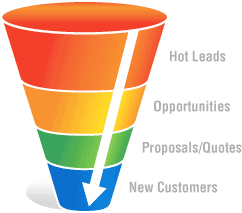
Article Contributed by Ray Haiber
Having a tough time finding a job? Unfortunately that’s not surprising news due to the fact that this current recession has already to near double digit unemployment rates in some regions. Many of the hardest hit industries such as financial services and home construction face the prospect of an extended or permanent contraction that will force many workers to seek new careers as positions in those industries become eliminated or harder to replace.
One viable alternative that has always been available to workers who either want to leave the restrictions of the corporate world, or can‘t find a job in their industry because of tough economic times is to “buy a job”. How do you do that? By either finding and purchasing an existing small business, or starting a franchise.
Buy An Existing Business:
Business Brokerage Industry statistics indicate that your odds of success increase dramatically when you buy an established business as compared to launching a start up. This is particularly true in challenging economic times, and if the target business has been established for over 5 years and has a proven track record that can be validated via a thorough due diligence process.
What Type of Business?
Your basic goals should be to find a business that you will enjoy working in and growing, compliments some of your existing skill sets, and will also provide enough net income for you to make a comfortable living. Ideally the business should also generate enough income to allow you to cover any debt service you may have incurred if you financed a portion of the purchase price.
How To Find a Business: What’s the best way to find existing businesses for sale? The most efficient way to begin your search is via the Internet. There are quite a few online “Business For Sale” directories like bizbuysell.com that offer a large searchable database of existing small businesses broken down by categories like states and industries. When you see a business that strikes your interest you can then contact the owner or the Business Broker who represents the listing for more information. In most case you will be required to sign a confidentiality agreement and provide some basic financial qualifications before receiving a detailed business summary.
Another way to find an established business is to employ the services of a professional business broker in your local area. Many Business Brokers have access to listings that might not normally appear on a local MLS system, are kept in house, or have knowledge about new listings coming available soon that may fit your investment parameters. A good Broker can also show and help you indentify potential business matches that you may have not even considered. And in most cases Business Brokers working with buyers are paid on a commission basis with the fee paid by the Seller so you have no out of packet expenses. You can find a Business Broker in your local area by visiting: http://www.findabusinessbroker.com
Buy A Franchise
Another viable option to replace a lost job is to start a franchise business. The biggest advantage of buying a franchise opportunity is that it’s a lot less risky than starting a new business from scratch. Most established franchise concepts are proven business models that have a verifiable track record of success that generally can be easily validated during your investigation of the offering. Franchisers can also provide comprehensive training and support before and after you open your location. And keep in mind that one of the main reasons for the success of franchising as a business model is that Franchisers have a vested economic interest in your success in the form of royalty and other fees.
Find A Franchise
As with existing small businesses, the fastest and most convenient way to begin the process of finding a franchise is with an Internet connection. There are now dozens of franchise directories on line today that offer comprehensive listings of franchises available for sale, including information about investment levels, training, availability, and how to contact the franchise company for more details. These directories are also a good source for free information about the general process of buying a franchise business. You may want to visit A couple different directories such as franchiseopportunites.com, franchiseforsale.com, and azfranchises.com because not all of then will carry the same franchise opportunity listings.
Final Note: Always thoroughly investigate any franchise or business opportunity, obtain all appropriate disclosure documents available, and seek expert consultation prior to making any investment decisions.
About Author:
Ray Haiber has 10 years experience as a professional Arizona Business Broker and franchise sales consultant. View and research franchise opportunities for sale across the USA here.
Author: Pamela Swift

Article Contributed Joanne Black
We’ve been told that getting more sales is all about your “activity,” but is it?
Our job as salespeople is to move as many qualified prospects through the sales funnel as quickly as possible—leading to more sales, better clients, and more income.
The traditional sales funnel to attract new business has maintained the same structure for years. There’s a wide opening at the top and a skinny tube at the bottom. The traditional prospecting method crams as many prospects into the top of the funnel as possible, hoping that new clients will magically pop out of the other end. The only thing that mattered was sheer activity.
Today, I’m going to debunk the myth that sheer activity is the ONLY thing that matters along with two other myths that are holding you back from getting more clients now.
3 Sales Lead Generation Myths That Will Hold You Back From Closing More Sales
Myth #1 Sheer Activity is the Only Thing That Matters in Sales
Wrong! Of course, activity is still important, but what really matters is that you feed the right people into the funnel in the first place and nurture those prospects who have been referred to you. Then hasten their passage through the sales funnel. This will decrease the amount of time it takes to you close your sale.
Picture the funnel from the traditional “olden” days. If you just stuff as much as you can into the top of the funnel, it’s more likely that weeds, rocks, sand, and other debris will clog the opening and prevent the steady entry and flow of good business. Try pouring water in a funnel that is filled with debris. The water backs up and nothing moves through. Not a pleasing picture, and not functional business model. It’s certainly not one that fosters an environment for attracting new business.
Myth #2 Sales 2.0 Leads are Qualified
There’s so much that’s wrong about the traditional sales funnel, and it’s gotten worse in the Sales 2.0 world. It’s not a referral-marketing funnel. In the past, we were schooled to throw as many prospects in the funnel as we could find. For example, we were taught to get so-called leads from mailings, trade shows, advertising, networking, newsletters, and speaking. Now in the 2.0 world, we are taught to get so-called leads from blogging, videos, eBooks, free reports, press releases, eZines, affiliate traffic, RSS feeds, and email lists. We can now choose to waste our time by following up on these so-called leads.
I call the leads above “So-called leads” because these aren’t really leads.
They’re inquiries, possibly names—or people just interested in free stuff. Everyone likes free stuff. If we take the time to weed through all this trash, we might actually find a prospect. These people are just prospects. They’re not business referrals. And, they’re still not leads.
Myth #3 It’s Important to Sort “Leads”
We have to change how we talk about leads. Inquiries are not leads. People wanting free stuff are not leads. Neither are those “coveted” lists or files of names. Calling these “leads” borders on insulting.
Leads are people who:
- Are truly interested in talking directly to you about your products and services to see how you can help them
- Match the profile of your ideal client
- Have a budget
- Have a need that you can fulfill
- Are open to pursuing how you can help them attract new business.
Now that’s a qualified business referral.
The best leads are those you have received through a referral. When you receive a qualified referral, you are pre-sold. You have credibility and trust. Your sales time shortens. And, you ace out the competition. When you’ve been referred, you get a new client more than 50 percent of the time. Get more referrals and get these results.
So stop calling everyone and everything a lead. It’s is a waste of your valuable sales time. I’m not just splitting hairs over terminology. It is downright misrepresentation when companies position themselves as lead-generation experts. It sounds so good (so easy), so we jump. And that’s when we get our sales funnel clogged with trash instead of getting more referrals.
In this lagging and volatile economy, it’s easy to be lured by business which clogs our sales funnel. We can’t afford to attract the wrong kind of clients to our business. It’s like dumping trash in our sales funnel. A full funnel is only valuable if it’s filled with the kind of clients that are right for you – clients that are qualified and referred.
Think about it: What’s in your sales funnel?
About the Author:
America’s leading authority on referral selling and founder of No More Cold Calling, Joanne Black helps salespeople, sales teams, and business owners get more referrals and attract more business fast without increasing costs. Now, discover how to turn prospects into clients more than 50 percent of the time even during a down economy at http://www.nomorecoldcalling.com
Does Anyone Knows Anything?

Article Contributed Guy Kingston
“Reports that say that something hasn’t happened are always interesting to me, because as we know, there are known knowns; there are things we know we know. We also know there are known unknowns; that is to say we know there are some things we do not know. But there are also unknown unknowns — the ones we don’t know we don’t know. And if one looks throughout the history of our country and other free countries, it is the latter category that tend to be the difficult ones.”
Donald Rumsfeld was widely mocked for his mangling of the English Language, but his analysis of the difficulty of assessing a situation is actually very useful.
As we try to work out what is going on in the world, we face knowns, and known unknowns, and unknown unknowns.
The knowns are the basic laws of economics and the history of all that has happened up to this point.
We know that credit is essential to keep a modern economy functioning and that credit depends on confidence. We know that credit was recently over-expanded due to over-confidence, resulting in a predictable reaction. We know that confidence now is at a low ebb and therefore credit is tight.
All this is fairly elementary. So it is inexcusable for self-styled experts or for those in positions of responsibility to claim that they do not know what is happening or why.
The unknown is where we go from here.
Even that is not entirely unknown: we know, for example, that recessions do end – at least they always have. The unknown is when. Since we know that we do not know, this is a known unknown.
In a straw poll of attendees at the World Economic Forum at Davos, sixteen predicted that growth would return in 2010 – and five predicted that we would be out of recession in 2009!
None of them predicted that the recession would go into 2011 and beyond. Those whose only source of information is the alarmist media might find this surprisingly optimistic. Of course, most of those polled serve on corporate boards and have a vested interest in talking up the economy.
Yet there is absolutely no reason why the worst should not be over by 2010 – so long as no one panics and so long as nothing unexpected happens.
Unhappily, that is where our friends, the unknown unknowns come in.
Everything that has happened in this crisis so far has been foreseeable and predictable – indeed, many predicted it. The unexpected has yet to take a hand – and it might yet.
The classic example of Chaos Theory is the butterfly that twitches it wings in Brazil and thus initiates a chain reaction that causes a hurricane in Texas.
It is a matter of fact, not theory, that small changes in the air temperature over Africa have caused the hurricanes that have devastated the East Coast of the USA to a degree not anticipated by actuarial tables, thus putting the whole insurance industry under unexpected strain. Few of the underwriters would have been able to predict those changes of temperature or would have been aware of their potential impact on business.
We have no right to feel superior. Just as the underwriters were unable to predict those changes of temperature, we are unable to predict what unexpected events, perhaps imperceptible in themselves, will have a major impact on our chances of coming out of recession this year or next.
A Congressman might quarrel with his wife over breakfast and take out his frustration at a Committee that ends up passing a bad economic package as a result.
“For want of a nail, a shoe was lost; for want of the shoe, the horse was lost; for want of the horse, the message was lost; for want of the message, the battle was lost…”
There are an infinite number of such potential variables. We can never see them all.
However, every entrepreneur still needs to make decisions – whether to expand or contract, to buy or to sell, and to save or to invest – that depend on making some sort of educated guess about what is going to happen over the next year or so.
If the last year has taught us anything, it has taught us the need for a degree of humility in making predictions – but it has also taught us that there is no excuse for ignoring the data that is available. Many things are unforeseeable – that this crisis was coming was not one of them.
About the Author
Guy Kingston produces and presents the Mind Your Own Business podcast, offering free business advice to entrepreneurs and business owners. As well as audio podcasts there are more articles like this, compelling videos and a must-read blog. All at www.myobpod.com or you can network and join in discussions on the MYOB Facebook group.

Article Contributed by Andy Lax
If you are a business owner, you have probably felt the pinch – if not a full smack down – from today’s faltering economy. Even more distressing, the situation may become worse before we turn the economic corner.
In a recent Washingtonpost.com article Retailers Report a Crisis in All Aisles, it was noted that retailers posted the worst November sales in 30 years according to the International Council of Shopping Centers. In fact, retail sales dropped 2.7% as compared to November of last year.
What is the impetus behind lagging sales? Simply, consumers are scaling back on their credit card spending. This is due primarily to:
- Tightening of credit card lending (causing a 5% drop in consumer spending)
- Recent increases in credit card interest rates and reduced credit limits
- Consumers maxed on their credit cards or buried under credit card debt
- Future economic uncertainty causing consumer frugality
In its 2004 – 2006 heyday, credit card spending enjoyed double-digit growth. However, as the saying goes, “what comes up must come down” and in 2007, annual growth dropped considerably to 8%. 2009 is not expected to fair any better with credit card spending estimated to rise a meager 3.3%.
The Domino Effect
Decreased consumer spending is causing a disastrous domino effect that is causing a tremendous strain on some retailers. In Retailers Report a Crisis in All Aisles, it was noted that retailers who have relied on consumers’ easy access to credit to purchase high-end merchandise such as flat screen TVs are faltering under the weight of decreased credit card spending.
The plight of Circuit City was placed under the spotlight to magnify the problem caused by consumers foregoing credit card use. When viewing the domino effect, the first domino to fall was consumer sales, followed by decreased inventory, as vendors tightened lending out of fear the company would not have enough incoming revenue to make payments. Decreased inventory further dissuaded shoppers from pulling out their plastic. This factor decreased sales even more, toppling yet another domino.
The New York Stock Exchange stopped listing Circuit City shares Dec. 15th as they nose-dived to an abysmal 19 cents. This is unfortunately a distressing “sign of the times” and could be in store (no pun intended) for other well known retailers.
On a brighter note, the Federal Reserve is in the process of instituting a program, which may assist retailers reeling from the current credit card crunch. It is in the process of buying an estimated $200 billion in securities backed by credit card, automobile and student loans in an effort to fuel markets running on empty.
Business Survival Training 101
Regardless if you head a large, medium, small or home-based business, your primary concern no doubt is to ensure your company survives and hopefully thrives during today’s economic downturn.
Instead of becoming discouraged, try to view the current credit card crunch in a more positive light. It has been estimated that the average credit card debt per household is $6,528 – an increase of an astounding 138% over the last 20 years!
Can a mountain of credit card debt and the financial, emotional and physical strain that goes along with it be considered healthy? Many consumers are now forced to live within their means, which consumer advocates believe to be a good thing.
You are probably wondering how this can possibly benefit your business. Although there will be challenges, it essentially boils down to learning how to adjust to the new reality of decreased consumer spending.
Although consumers are currently using credit cards less, it is still imperative to allow for this option. Credit cards remain the preferred mode of payment for most individuals and accepting plastic is absolutely essential when selling your goods or services online or offline.
If you are not currently accepting credit cards, but wish to do so, make certain to do your homework before choosing a merchant account provider (MAP), necessary when accepting plastic for purchases. Make certain to compare and contrast fee structures offered by numberous MAPs to locate one most compatible with your business needs and offers the best “bang for your buck”.
If you already have a merchant account, go over your statements with a fine toothcomb to pinpoint areas where you could potentially save money. Speak with your MAP to see if your account is still in step with your business. Are there areas where certain fees could be decreased?
There is also no harm in shopping around. Think about how many times you have done just that when looking for a better deal with your car insurance on sites like this for example. Is there a MAP offering better terms than what you currently receive? Even if your present merchant account has an early termination fee, you may discover that switching to another MAP will save you money in the long run.
In today’s stunted economy, it is more important than ever to be creative and devise methods to increase the value of your goods or services. One sure fire way to do so is to reduce your overall operational expenses. The money you save could then be passed onto your customers/clients in the form of buyer-friendly prices – sure to give you a leading edge over your competitors.
About the Author
Andy Lax has worked in the credit card processing industry for over five years and is now an Account Manager at IntelliCollect, a merchant account provider that enables business owners to accept credit cards and electronic checks.

I can’t believe we didn’t learn them from the past recessions
1. Have a strategy ready to implement if your sales drop 10%. This is a normal business fluctuation. Too many businesses have grandiose plans for growth but don’t plan for this reality. Have a plan for what you would do if there is a 20% to 25% drop in sales. Almost all businesses will have a negative cash flow if they continue normal operations during this type of a sales decline. Either you will have a plan on how to significantly reduce costs or you will be borrowing money and putting your wealth at risk.
2. When times are good, pay down your debt, increase your lines of credit, and upgrade or replace your equipment. Pay as you go on these expenses. Put money away so you can live without a paycheck for 2 years. A downturn will eventually come and you will not have enough cash flow to pay yourself or pay off your loans. Your business will fail if you didn’t prepare.
3. When times are good, do everything you can to reduce your customer concentration. Even big customers will fail during a recession and if you concentrate your sales with them, you will follow them to failure. Also reduce your sales to any one industry. A single industry may be especially hard hit during a particular downturn.
4. When times are good and your customers are healthy, review any credit facilities that you offer your clients. When a downturn comes, accounts receivable will grow rapidly, increasing your risk of failure. Your customer’s customers’ problems quickly become your problems when they owe you money.
5. When times are good, work with your suppliers to reduce the amount of personal guarantees that you made. Check your lease to see if you are personally guaranteeing it. When you started out, you signed a guarantee of payment agreement that included you standing behind your business line of credit with your personal wealth to get delivery on credit. Now that you have been successful and times are good, they may allow you a limited credit line with only a corporate guarantee. In a recession, instead of “just” loosing losing your business, you may loose lose your family house without this change.
6. When times are good, align your employee benefits with the employee working hours or a fixed dollar amount you make available for the benefits. If you have to cut back on employee hours during a downturn, do the benefits costs also go down? If health insurance spikes up, is it your company’s obligation to pay more?
7. Developing your personal network is a big advantage during flush times. Networking loyalties develop customers that are not particularly price sensitive. Your networking clients justify using your business by believing they are getting superior service for this higher price. During a downturn, this all goes and most businesses switch to the low low-cost supplier. Be prepared to give these loyal clients your best price during bad times since they will most likely come back to you when things look better.
8. If the “sustainable competitive advantage” of your business is not being the low cost supplier of the basic product, you had better have a plan for getting there quickly. Customers will start doing without all of the bells and whistles on the products. Don’t tie your pricing structure to selling customers on high margin upgrades or more pricey models. They will start passing on these.
This article is provided by Stan Spector, author of “Baby Boomers’ Official Guide to Retirement Income”. Stan Spector is also a business broker in Rochester NY “Selling Family Businesses- Confidentially”
* * *
When looking at savings account interest rates, it’s important to not only pay attention to the rates but at how sound the bank account really is. This means doing a little research on the financial stability of the bank in question. The same holds true when you’re looking at a bank’s CD rates. You should also always try to stay under the FDIC insured limit.